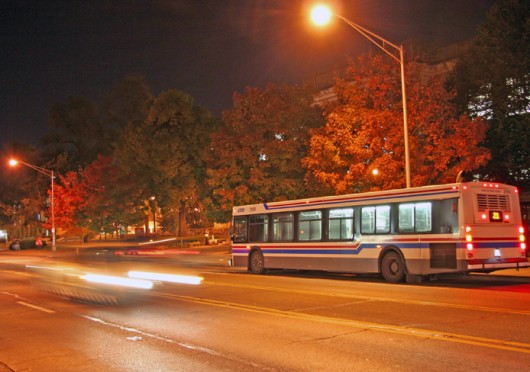Every day on his way to class, Alex Castrey walks by rows of Greek houses, stores on High Street and homeless people.
But lately, he’s noticed something different on his route.
“I think there’s been an increase, definitely,” Castrey, a second-year in finance, said of the homeless people he passes each day.
Castrey isn’t the only one to take notice of this rise in the off-campus homeless population. It’s a difference officers on the Columbus Division of Police force have reported to their commander, too.
Columbus Police Commander Christopher Bowling said that since the spring, many of his officers have told him about more and more homeless individuals establishing roots in the off-campus area, sticking mainly to the east side of High Street between 12th and 15th avenues. He said the homeless population has also increased in the Short North recently.
“As the year has progressed, we’ve seen an increase probably since spring, and it’s been incremental to the point where it’s noticeable,” Bowling said.
He said homeless individuals have progressively migrated to the Short North because many people in the area have money.
So why have many homeless individuals rooted themselves near a college campus as well, when college students are known to lack cash?
It all comes down to foot traffic, Bowling said.
“Although college kids don’t translate to money, there’s a lot of traffic, a lot of chances to sit there with a cup out asking for spare change,” he said.
Even so, Bowling said Columbus Police hasn’t quantified the number of homeless individuals in the off-campus area despite this noticeable increase.
“Noticeable could be eight individuals instead of four. We don’t go around counting homeless people — it’s not a crime,” Bowling said.
Unless those individuals are aggressively panhandling passersby for money or too close in proximity to places like ATMs, they’re not doing anything wrong, according to the law.
There were 1,488 homeless people living in Franklin County in 2013, according to the 2013 Homelessness Report by the Coalition on Homelessness and Housing in Ohio. That number was 3.8 percent higher than the 1,434 reported in 2012.
From the experience of Sue Villilo — executive director of Faith Mission, which offers services to homeless people throughout Columbus — the homeless aren’t committing more felonious crimes than people who have homes.
“People that are experiencing homelessness do not commit any more crimes than the general public, except in the nuisance crime categories — loitering and public urination, maybe,” Villilo said.
Earlier this year, a homeless man was arrested and charged with three counts of rape and one count of kidnapping for reportedly raping a 21-year-old woman inside an off-campus residential garage. The case of the suspect, Randy Graham, Jr., was still active as of Wednesday afternoon, according to a search on the Franklin County Clerk of Courts website.
Despite that incident, Bowling said crime among homeless people varies on an individual basis and agreed with Villilo that many of the homeless population’s criminal records are comprised of misdemeanors.
So the problem, Bowling said, arises from the public’s perception of those people experiencing homelessness.
“The idea that people are out there asking for money creates the perception that something’s wrong — (it) creates a perception issue,” Bowling said.
Because of that perception, Bowling said CPD officers are now responding to an increased number of calls in the area.
“The problem for us is that our runs start to pick up because they want certain people gone — they don’t want them there,” Bowling said. “We get the call that somebody is begging at 11th and High — go make them quit. Well, no, it doesn’t work that way. They’re allowed to be out there as long as they’re not breaking the law.”
But for some students like Castrey, the increased presence of homeless individuals along High Street makes them feel uncomfortable.
“They normally ask for change … I say I don’t have any,” Castrey said, adding that he sometimes gets upset because multiple homeless people will ask him for money as he walks down High Street.
Still, Villilo said she thinks most people, students included, want to be helpful when they’re asked if they can “spare some money for lunch or a dollar to ride the bus.”
“It’s obviously a personal preference if you want to provide money or not,” Bowling said. “Once you get past that, we advocate giving money to the Columbus (Community) Shelter Board or to the Mid-Ohio Foodbank.”
For those people who don’t want to give money, Villilo suggests printing off a Columbus Coalition for the Homeless streetcard, which lists various Columbus locations that offer walk-in services for homeless individuals.
Above all, Villilo advocates showing kindness to people who are experiencing homelessness.
“I think we’re vastly underestimating the number of people experiencing homelessness in Columbus and Franklin County,” Villilo said. “I think it’s always nice if you can be kind.”



